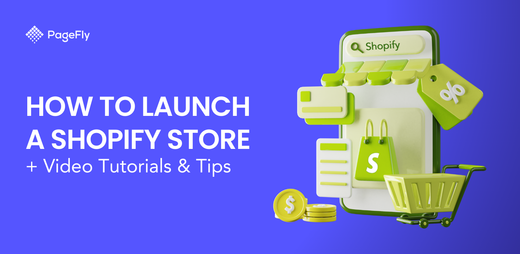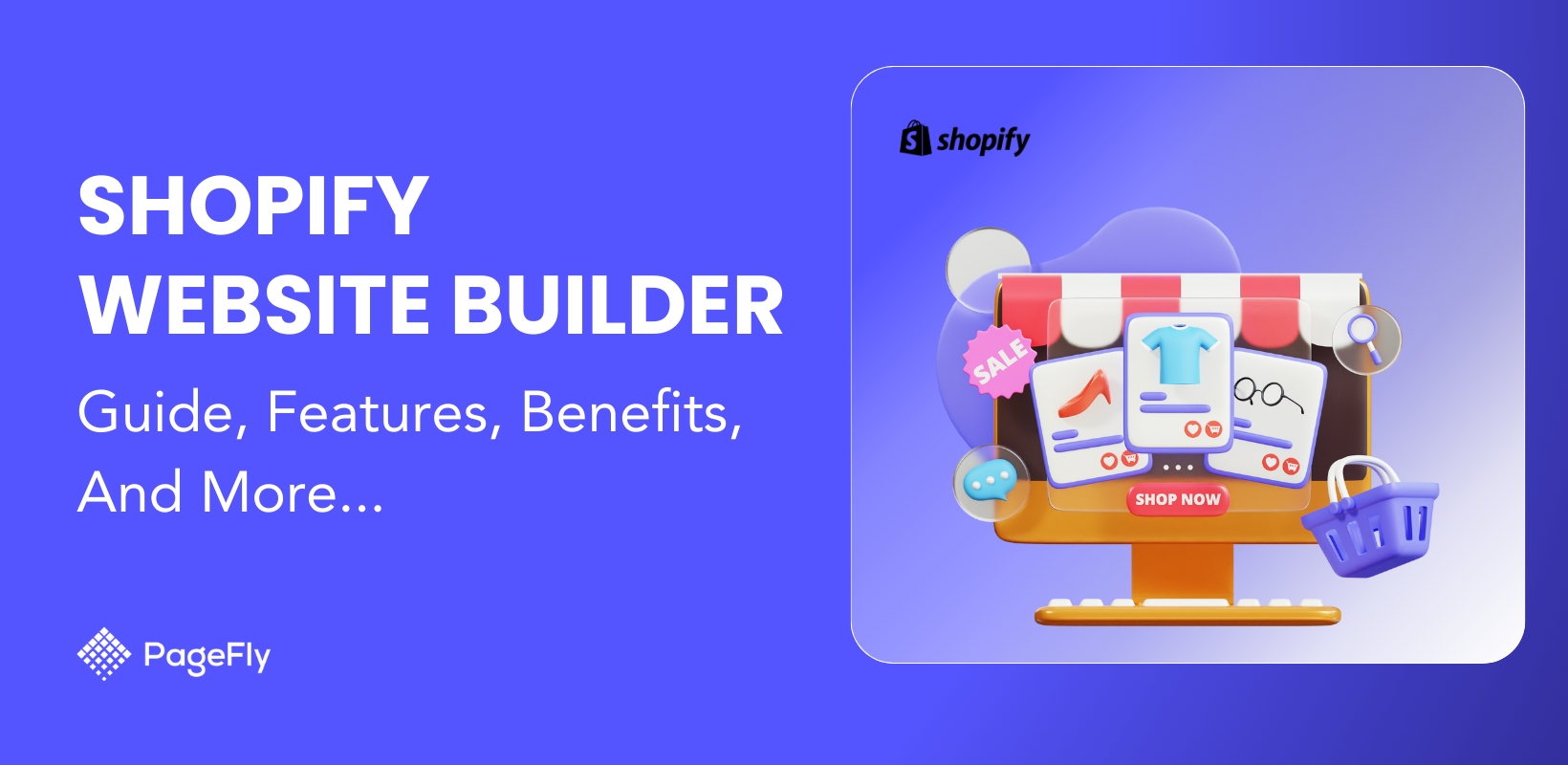Source: Canva
Whether you are an aspiring entrepreneur or an already established brand, one of the constant challenges you will be facing is: How do you attract (and continue to attract) the right audience to your online storefront? How to drive traffic to the Shopify store is a question that many of you merchants will be thinking about, and in this article, we will answer just that.
The idea of driving traffic can sometimes be overstated. But traffic is important to fuel growth, improve brand recognition, and ultimately generate sales and revenue for your business. We will explore the nine best ways to get traffic to your website, both free and paid, with pro tips for your benefit. So, let's get started.

Is Shopify Good for Driving Organic Traffic? Understand the Platform Is a Must
Yes. Shopify is an effective platform for driving organic traffic, thanks to its built-in SEO tools, optimized site structure, and content marketing capabilities.
Many successful Shopify stores, such as Kylie Cosmetics, Colourpop, Gymshark, and Fashionnova, generate over 90% of their traffic organically, proving that with the right strategy, Shopify can be a powerful tool for attracting non-paid visitors.
Good side: Shopify SEO Capabilities for Organic Traffic
Shopify includes several SEO-friendly features to help merchants improve their search engine rankings:
- Automatic canonical tags prevent duplicate content issues that could hurt SEO.
- Customizable title tags, meta descriptions, and blog URLs make it easier to target relevant keywords.
- Image alt text editing allows Google to understand and rank product images.
- Optimized Site Structure for Higher Search Rankings: Supporting SEO-friendly URLs, eliminating iframe usage, ensuring all pages are fully indexable, and fast loading themes for speed booster.
- Built-In Blogging for Content Marketing: Shopify allows merchants to publish blog posts directly within their store. In addition, you can install third-party blogging apps from Shopify App Store for optimal blogging results.
- Fast-loading themes (like Turbo, Flex, and Blum) help improve site speed, a crucial SEO factor
For example, Kylie Cosmetics, a Shopify Plus store, has successfully optimized its website using these Shopify SEO elements, resulting in 600K+ visits in six months, with nearly 90% of its traffic coming from organic search.
Downside of Shopify To Drive Traffic
- Shopify auto-generates multiple URLs for product pages (e.g., color variants), leading to duplicate content problems, which can impact search ranking. For example, WordPress users have full control over site architecture, while Shopify merchants need third-party SEO apps to modify advanced SEO settings.
- URL structure (e.g., /collections/, /products/), making deep optimization difficult.
- While Shopify’s themes are optimized for speed, excessive third-party apps inject unnecessary scripts, slowing down the website and hurting SEO. For example, a store using multiple apps for reviews, chatbots, and pop-ups may experience slower load times, reducing Google Core Web Vitals scores.
Solutions to Overcome Shopify’s Limitations and Leverage its Advantages
- Use SEO-optimized themes like Turbo or Flex to enhance page speed.
- Limit third-party apps and remove unused scripts to improve performance.
Optimize meta tags, URLs, and alt text for better rankings. - Fix duplicate content issues with custom canonical tags using Liquid code.
- Leverage Shopify traffic booster apps in Shopify App Store, which provide tons of Shopify-tailored tools.
By leveraging Shopify’s built-in features while addressing its limitations, you can definitely maximize organic traffic growth and improve search engine rankings.
How to Get Traffic to Your Shopify Store? Free Strategies
With nearly 10 years of helping Shopify merchants building their stores, acquire, and convert, PageFly has established itself as a trusted Shopify partner and expert. With years of experience, here're 9 best free and paid methods to drive traffic to your Shopify store.
You can adopt any of these methods (or a combination of them):
Optimize Your Store for Search Engine

Source: Canva
Imagine your store being the top result when someone searches for "eco-friendly yoga mats." Search Engine Optimization (SEO) makes this dream a reality. It involves optimizing your website content and structure to increase its visibility in search engine results pages (SERPs).
How it works:
- Keyword research: Identify relevant keywords people use to search for products like yours. Tools like Google Keyword Planner and Ahrefs can help.
For instance, if you have a clothing store on Shopify that sells t-shirts, caps, etc., then some of the keywords you ideally want to target would include the ones shown below:

Remember, the intent could vary. If you are looking for keywords for product listings, you can go for commercial or transactional keywords, and for homepage, a mixture of informational, transactional and navigational keywords should work.
- On-page optimization: Include target keywords naturally in your product descriptions, titles, and meta descriptions. Optimize page loading speed and mobile responsiveness.
- Off-page optimization: Build backlinks to your site from other reputable websites. Engage in guest blogging and online communities relevant to your niche.
Remember, SEO is a marathon, not a sprint. Consistent effort and high-quality content are key to long-term success.
Content Marketing

Source: Canva
Creating content that showcases your products, expertise, and brand personality can attract organic traffic to your store and establish your brand as a thought leader in your niche. If you are writing blogs, remember the SEO tips we discussed previously.
Creating content that effectively addresses user problems while also being optimized for search engines is essential for successful blogging. This strategic approach involves customer journey mapping, persona development, keyword research, and content gap analysis.
Now, to answer the big question: What type of content can you create to drive traffic?
You can create
- Podcasts - works the best for art-focused brands, or brands that are taking up sustainable methods of production.
- UGC - works well for all types of products and services.
- Blogs - ideal for clothing, home decor, kitchen and health and beauty brands.
- eBooks - great for electronics and technology-focused brands.
- Guides - if the product you sell require advanced assembling or techniques, or has software updates,
- Case studies - if you are a B2B brand.
- Videos - works well for all kinds of brands.
To choose which type of content and where to publish it, try to answer the following questions:
- Who is your ideal audience, and what problems do they seek solutions for?
- What are their interests, activities, and passions beyond your products or services?
- Where does your ideal audience spend their time online, and what type of content do they consume?
- How can you create content that aligns with their interests and addresses their needs?
Social Media Marketing

Source: Canva
Social media marketing can help you drive traffic to your website without spending money, that is, without the use of any ads. Here's how you can do that:
- Create compelling content that resonates with your target audience. This content could be videos, social media posts, and user-generated content.
- Optimizing your social media profiles is crucial. Make sure your profiles are complete and optimized with relevant keywords, a catchy bio, and a link to your website.
- Use relevant hashtags related to your industry or niche to reach a wider audience interested in your content. Check out this Twitter post by Gymshark with a trending hashtag.

- Consider collaborating with influencers or micro-influencers. This could involve sponsored posts, product reviews, or other forms of collaboration to reach a larger audience.
There are many social media Shopify apps you can use to support your efforts, such as SP - Auto Post Facebook if you want to automate posting on Facebook or Video Ad Machine for creating videos for your social media profile.
Read more: How to add social media to Shopify (Updated 2025)
Shopify Discounts and Promotions:

Source: Allbirds
Offering discounts is a great marketing strategy to drive sales to your Shopify store. In Shopify, you can create new discount codes, set up automatic discounts, and even sell prices for individual products. To drive traffic to the Shopify store, you should
- Offer exclusive discounts and promotions to your email subscribers, social media followers, and website visitors.
- Create urgency by setting a limited time frame for your discounts and promotions to encourage customers to take action.
- Promote your discounts and promotions through your website, email marketing campaigns, and social media platforms to maximize visibility.
- Use discount or promotion Shopify apps to create and manage discount codes, flash sales, and other promotional offers directly within your Shopify store.
Read more: How to Create Effective Shopify Discounts with Bundler
Utilizing Google My Business

Source: GMB Gorilla
Google My Business (GMB) is a free tool provided by Google that allows you to manage your business listing and appear in local search results. Here's how you can set it up:
- Create a complete listing using your business address, hours, contact info, descriptions, and high-quality photos.
- Get a verification code via mail, phone, or email to claim your listing.
Creating a GMB listing is not enough. You will have to optimize it to improve visibility in the search results. For that, you need to
- Categorize your business by choosing the relevant categories to help customers find you.
- Post regularly and share updates, offers, and events to keep your profile active.
- Respond to reviews and even address negative ones professionally.
- Offer incentives like discounts or early access to new products.
Here’s a GMB listing of a Shopify brand called Huit Denim Co.

Paid Strategies to Drive Traffic To Your Shopify Store
While organic strategies like content marketing and search engine optimization are crucial, sometimes you need a little extra push from other paid Shopify marketing strategies. Here's an overview of several paid traffic methods to consider:
Facebook/Instagram (Social Media) ads

Source: Canva
Highly targeted advertising and social media platforms across Facebook and Instagram, with over three billion and 2 billion users (source: Statista), respectively, can help your brand reach millions of users based on demographics, interests, and behaviors.
To get started,
- Set up a Facebook Ads Manager account and connect it to your Facebook/Instagram pages and Shopify store.
- Before you run the ad campaign, identify your ideal customer with detailed targeting options.
- Choose your campaign objective, which, in this case, would be traffic and product purchases.
- Create compelling ad copy and visuals. Feel free to use any design tools such as Canva or Adobe for the same.
- Set a budget and start monitoring performance.
Like with any campaigning, there are a few pros and cons you need to be aware of before starting.
Pros:
- Get super-targeted reach
- Receive detailed analytics
- Use a variety of ad formats
Cons:
- Requires budget and ongoing management
- Learning curve to an extent.
Paid Google Ads

You might be already aware of or are using the pay-per-click advertising platform - Google Ads. This is where your ads appear at the top of search results or on relevant websites.
If you haven't yet tried out Google Ads, here's how you can get started:
- Identify terms or keywords potential customers search for to find your products.
- Determine the maximum you're willing to pay per click.
- Stand out from competitors with clear and concise text.
- Choose the campaign type, location, and language.
- Set your schedule.
- Track results and adjust bids, keywords, and ad copy for improvement.
With Google Ads, you are able to reach customers who are looking for products and services similar to the ones you have to offer. The key player in this is the keywords and demographics, resulting in a more targeted approach. You can also get insights into clicks, conversions, and return on ad spend (ROAS).
But remember, competition can be high as some keywords can be very expensive. Running Google Ads would also need regular monitoring and a decent budget.
Partnerships and Collaborations

Source: Canva
How do people find your store? Collaborating and partnership can be your answer.
In a time where social media platforms are ruling and influencing purchasing decisions, teaming up with social media influencers, brands, or popular organizations can not only help you reach your target audience but also build trust.
- Explore co-branded product lines or promotions where you combine your strengths with another brand and gain exposure to each other's audiences.
- Guest blogging and social media mentions are great for getting featured on relevant platforms and reaching their followers.
- Affiliate partnerships where you work on commission-based sales to incentivize partners to promote your products.
While this method is great for building credibility and reaching an audience beyond your own marketing efforts, you need to identify partners that truly align with your goals to see positive results. Also, managing agreements and tracking results can be tricky, but it is an essential part of this.
Collaborating with influencers and affiliates are also 2 trending strategies to drive qualified traffic to Shopify store. With an existing engaged audience that fit your target audience (if you research your target audience and find the right influencers), there's no doubt that they can help brings engaged traffic with high conversion rate to your store.
Email Marketing

Source: Canva
An age-old method, but it still works! Building an email list and sending targeted emails to promote your products, engage your audience, and drive sales can still be your last trick to success.
To begin with,
- Build a solid and targeted email list offering incentives like discounts or exclusive content to encourage sign-ups.
- Segment your list based on interests and purchase history for targeted messaging.
- Create engaging email campaigns by crafting personalized emails with valuable content and clear calls to action.
- Monitor open rates, click-through rates, and conversions to optimize your campaigns. Don't forget to make changes based on the results to see more impact in the future.
Email marketing is a relatively low-cost method of driving traffic to your website compared to other paid channels, and it can have high ROI, too. However, building a targeted email list or finding high-quality leads can take time. Hence, you need to be patient. Also, when sending out emails, ensure you comply with anti-spam regulations and GDPR/CCPA requirements.
Shopify has its own built-in email marketing tool that helps businesses grow their traffic called Shopify Email. Additionally, merchants can also find popular email marketing apps that can integrate seamlessly with Shopify from Shopify App Store.
Additional Tips for Success
To ensure long-term success in driving traffic to your Shopify store, consider these essential strategies:
Optimize Traffic to Conversion - Using Tools Like PageFly

Maximize your traffic's potential by optimizing your store's pages for conversions. Tools like PageFly - The #1 Shopify Page Builder allow you to create high-converting landing pages with ease, ensuring that visitors become customers.
Top Shopify plus store like Keychorn, has attracted over 400.000 monthly organic visits with approximately 1000 new visitors daily with PageFly!
Analyzing Performance
Regularly analyze your traffic and conversion metrics using tools like Google Analytics, and Shopify's built-in Analytics. This helps identify areas for improvement and optimize your strategies accordingly.
Using Shopify built-in analytics dashboard helps merchants tracking sales, sessions, and conversion rates to see current traffic performance and make strategic adjustment if needed. By that, you can identify top-performing products and channels, allowing you to allocate resources effectively.

Conclusion
And there you have it! Nine effective strategies to drive traffic to Shopify stores. Remember, each paid or free strategy has its advantages and challenges. Evaluate your budget, target audience, and marketing goals to choose the best mix for your Shopify store. By starting small, experimenting, and analyzing results, you can easily unlock the power of Shopify store traffic and watch your business reach new heights.
How To Drive Traffic To Shopify Store FAQ
Use SEO, social media, content marketing, and forums. Optimize product pages, post on Instagram and TikTok, engage in niche communities, and use email marketing.
Leverage social media ads, influencer shoutouts, trending hashtags, and viral content. Engage in high-traffic forums like Reddit and Quora.
Use SEO, blog content, social media, and free listings like Google My Business. Engage in online communities and share valuable content.
Focus on SEO, high-quality content, backlinks, and social media engagement. Publish blogs, optimize keywords, and interact with your audience.




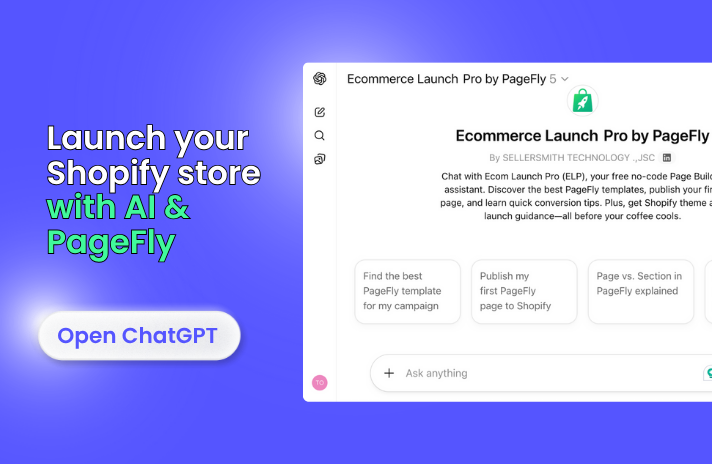
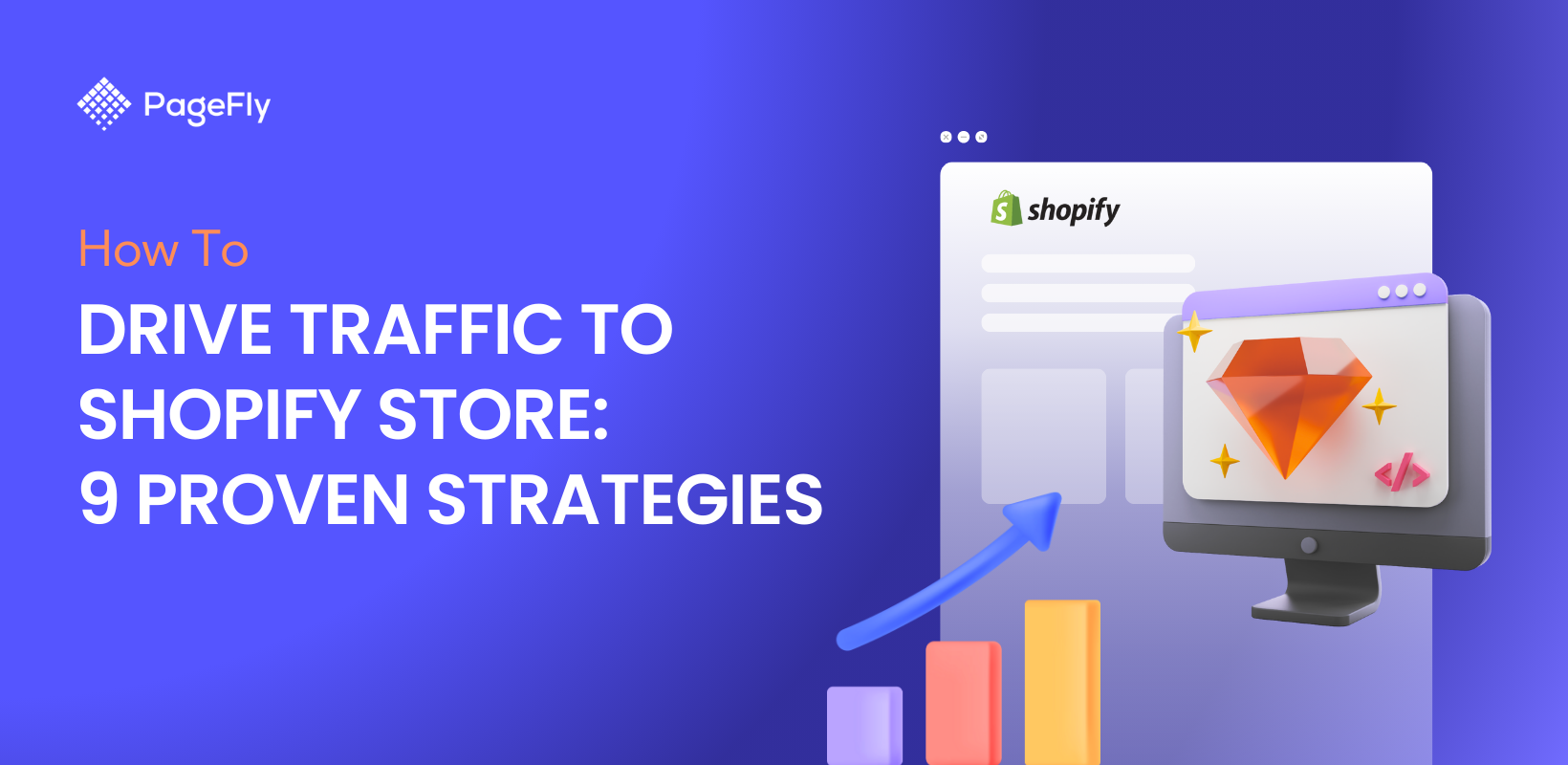
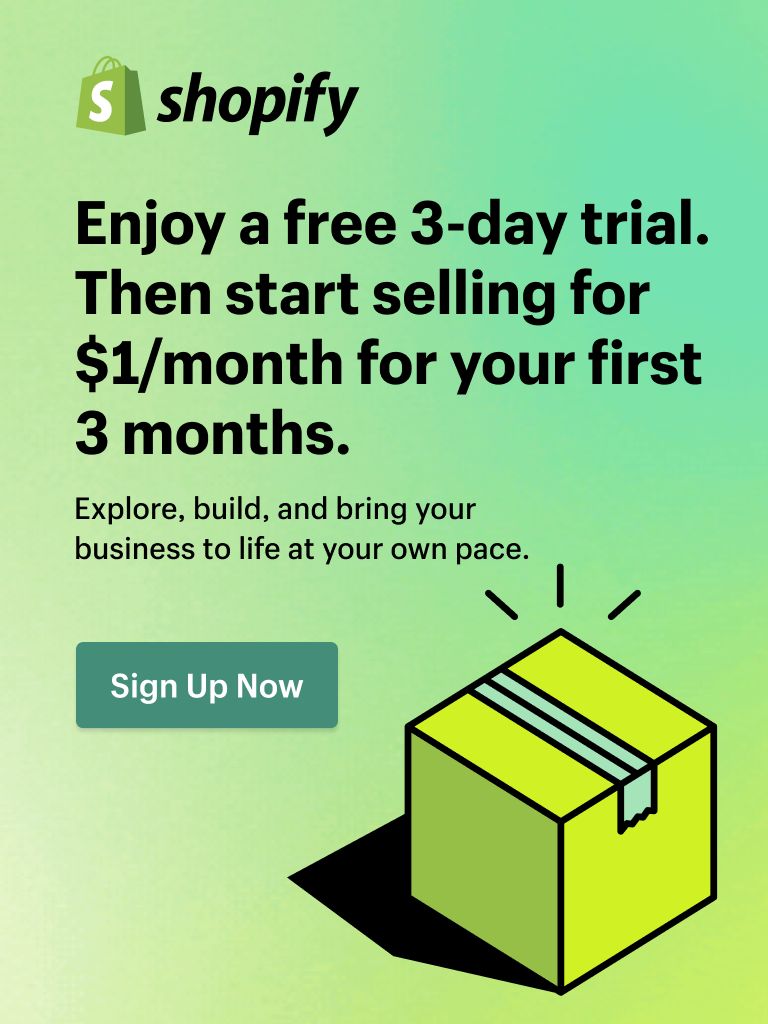
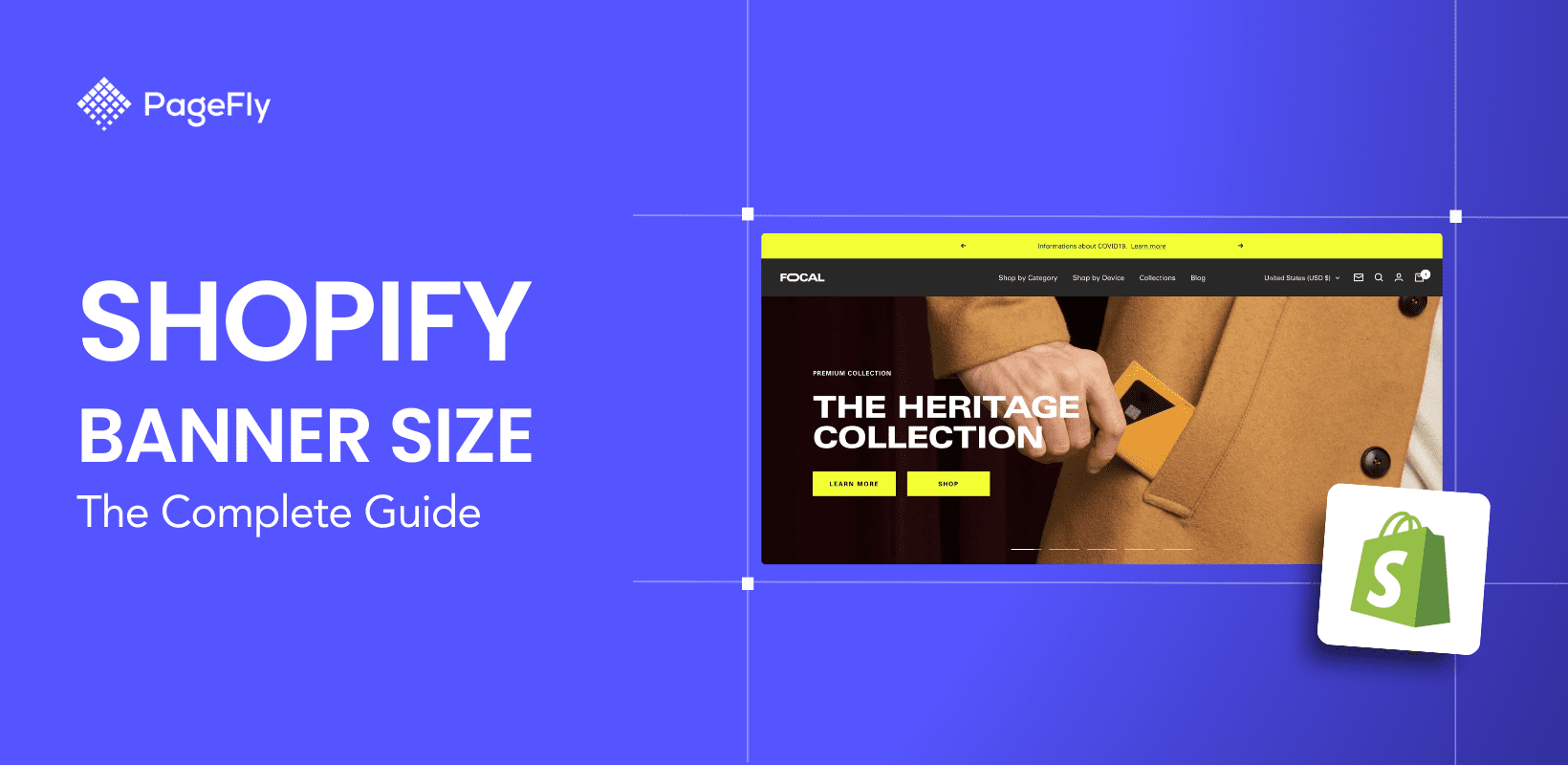
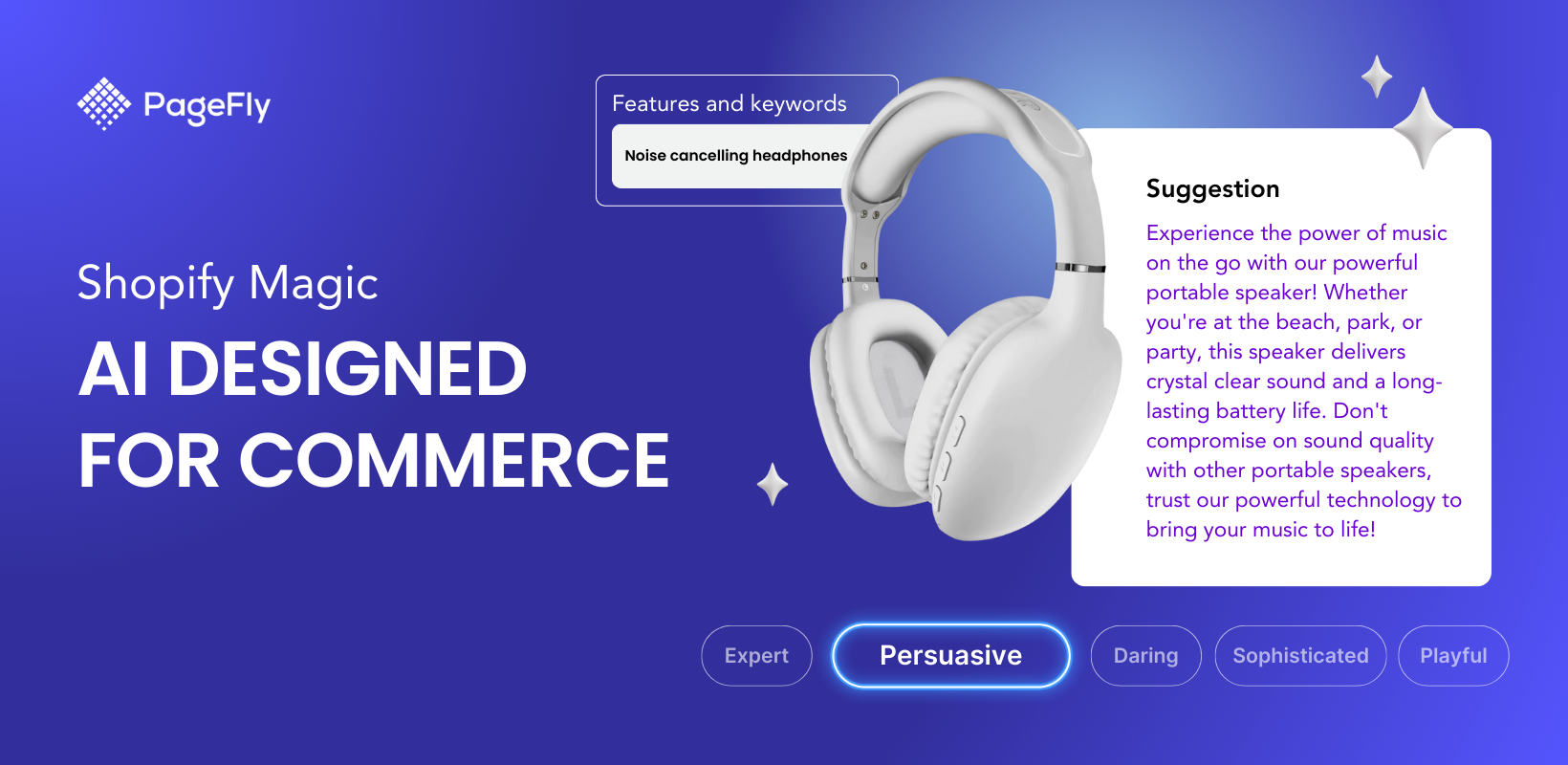
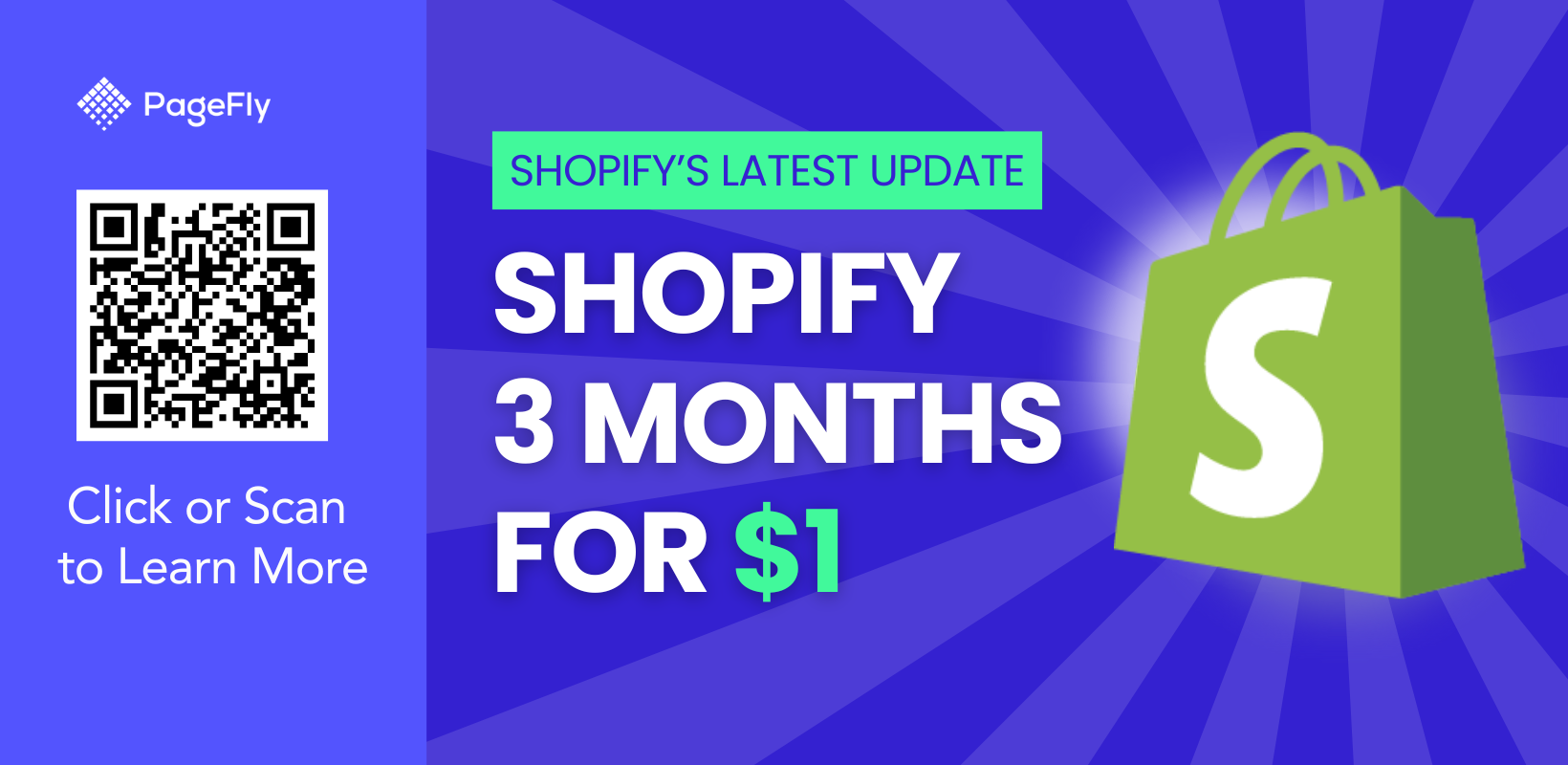
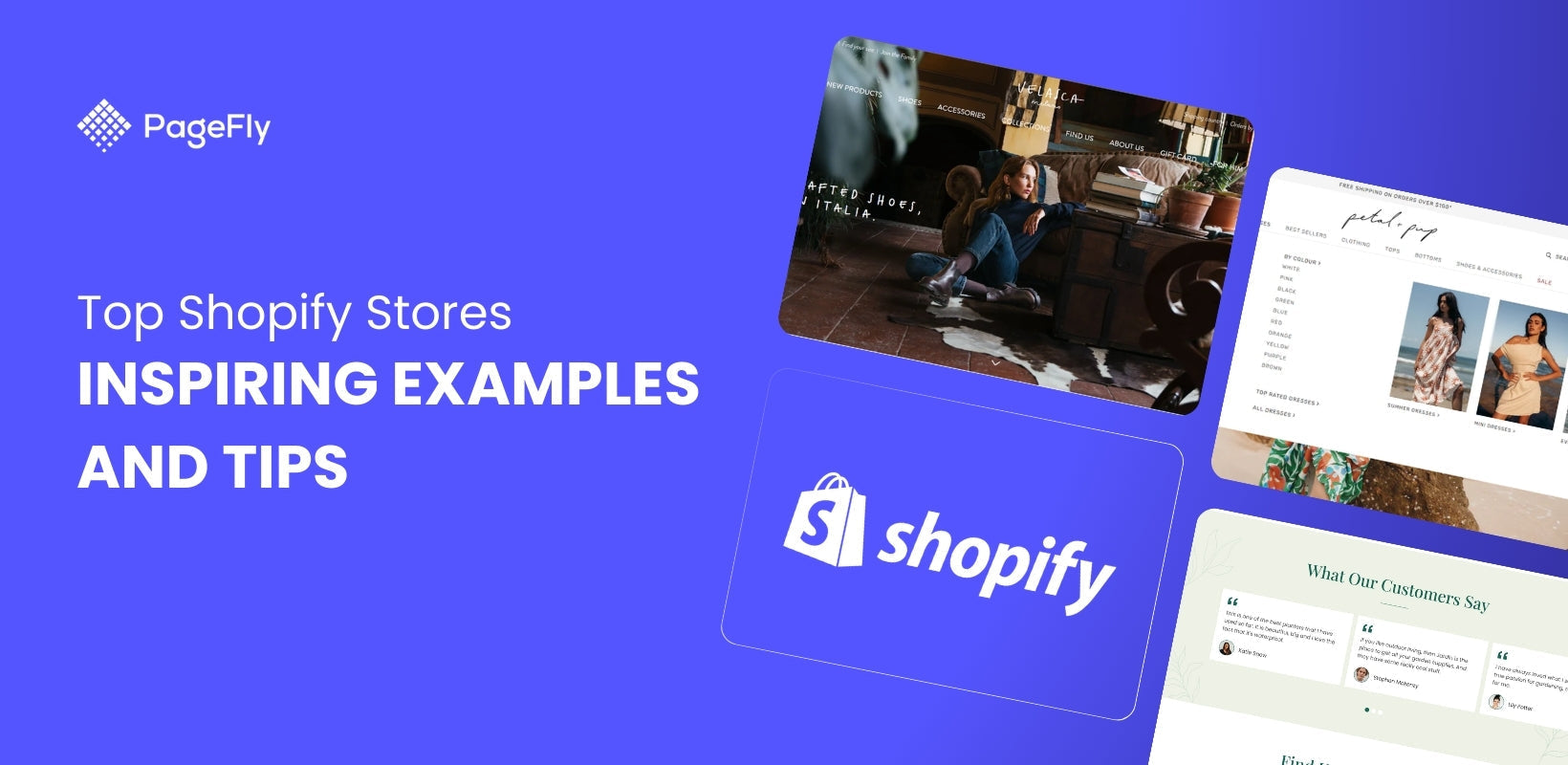
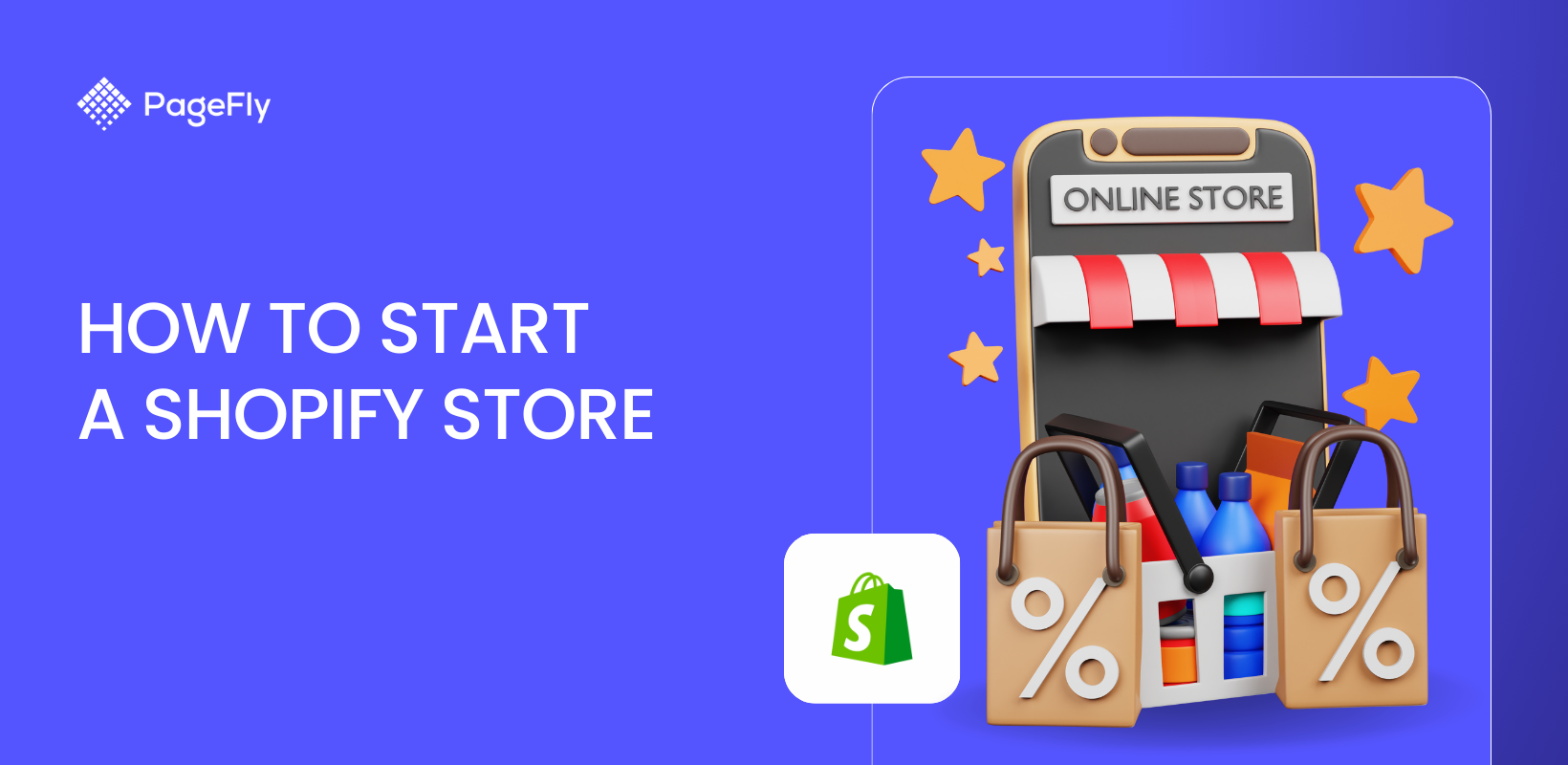
![27 Best Shopify General Stores + Complete Strategy Guide [2025]](http://pagefly.io/cdn/shop/articles/Best_Shopify_General_Stores_2f9d09f2-7c38-4da9-a495-e9f4898ddd68.jpg?v=1757271936&width=1640)
